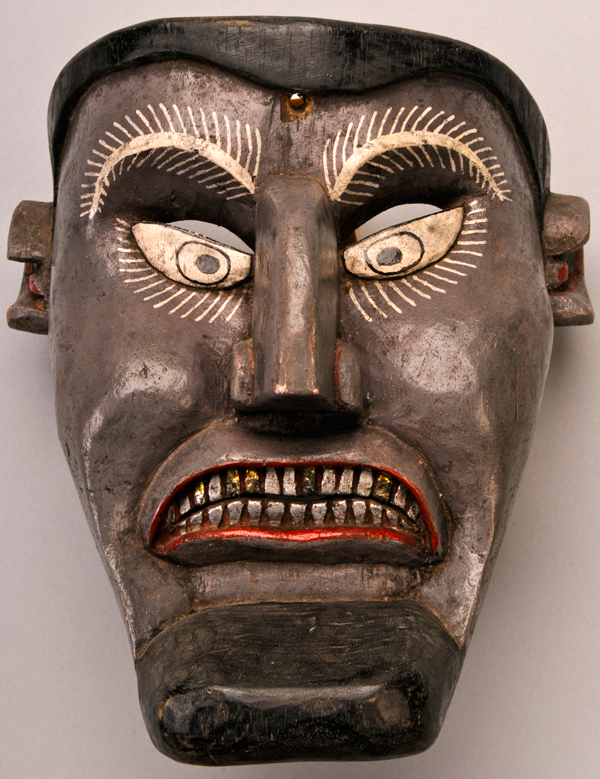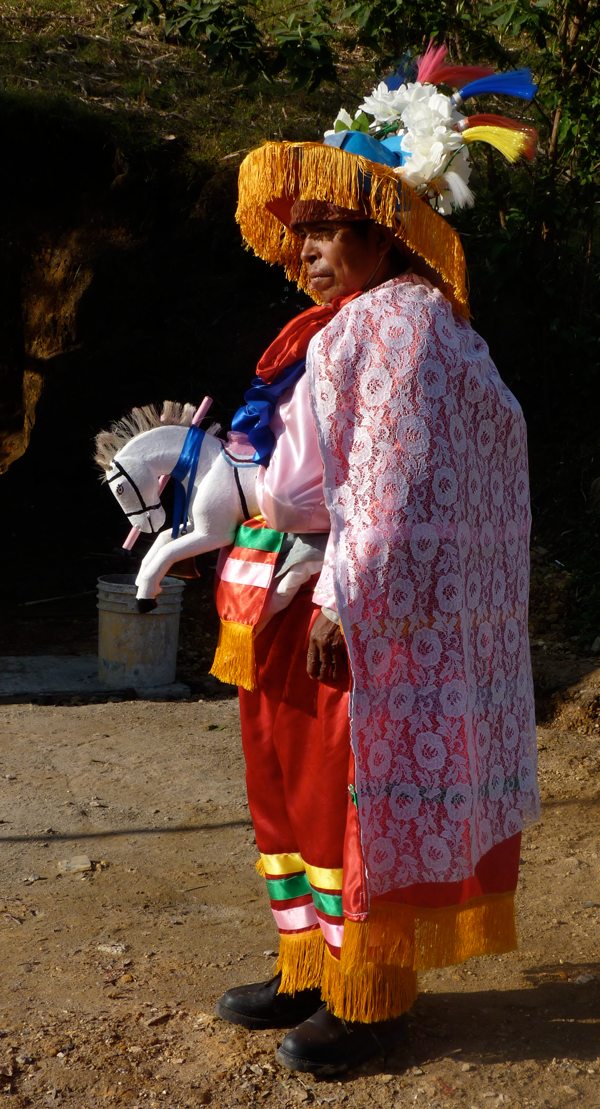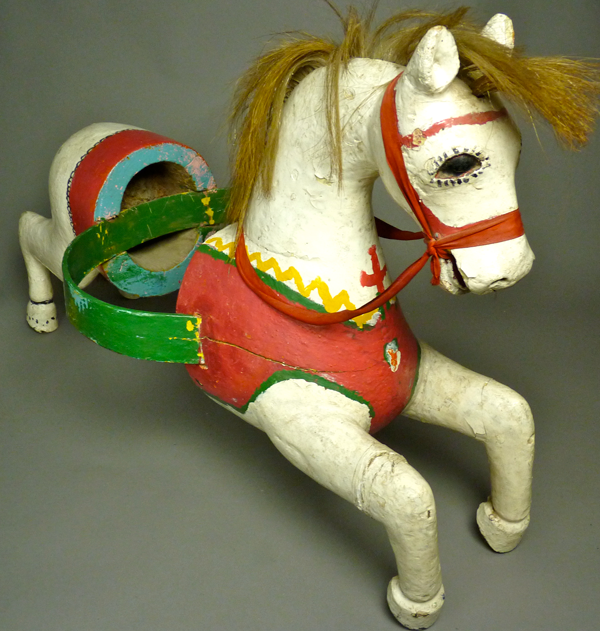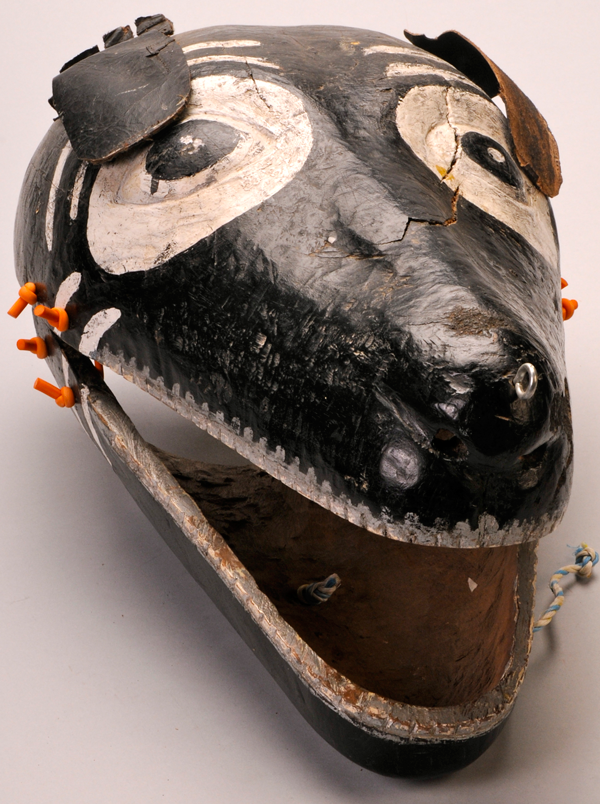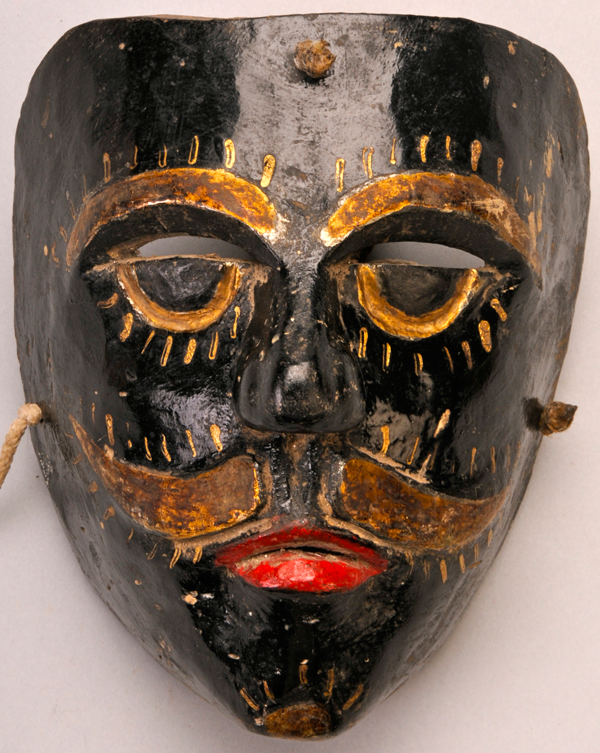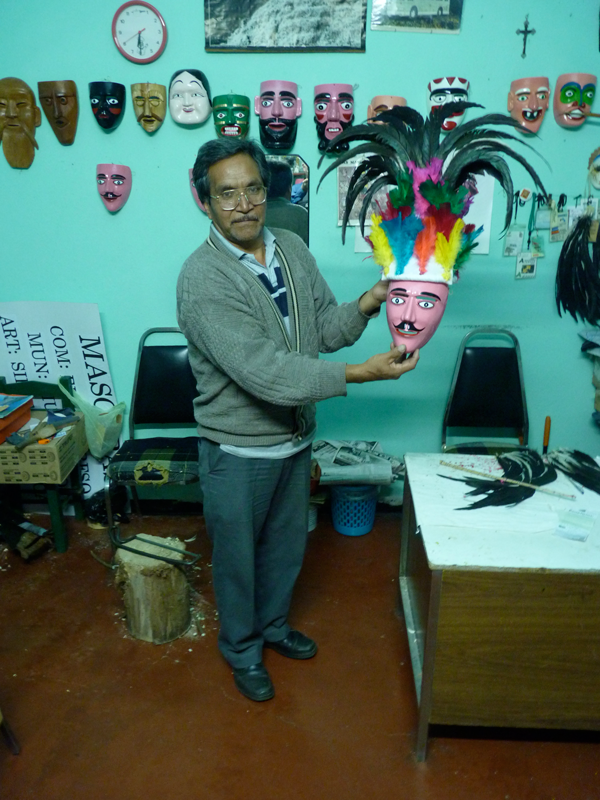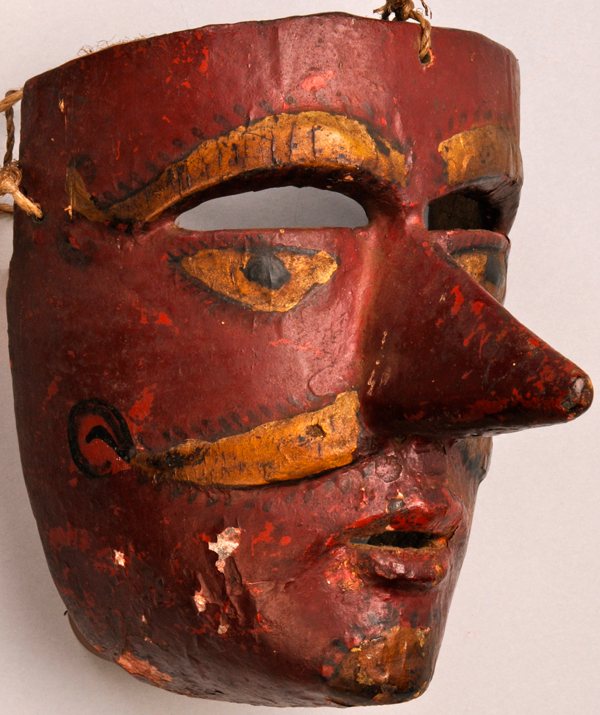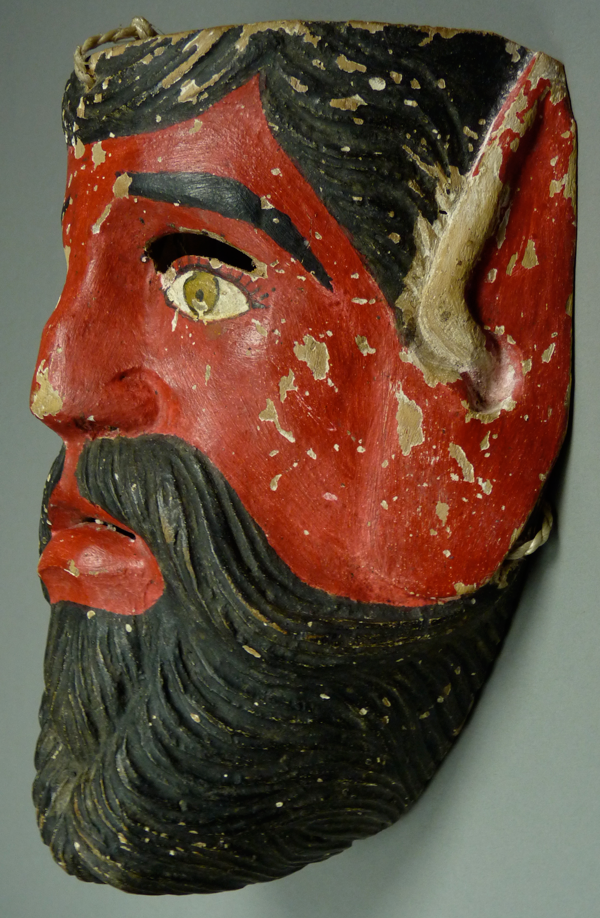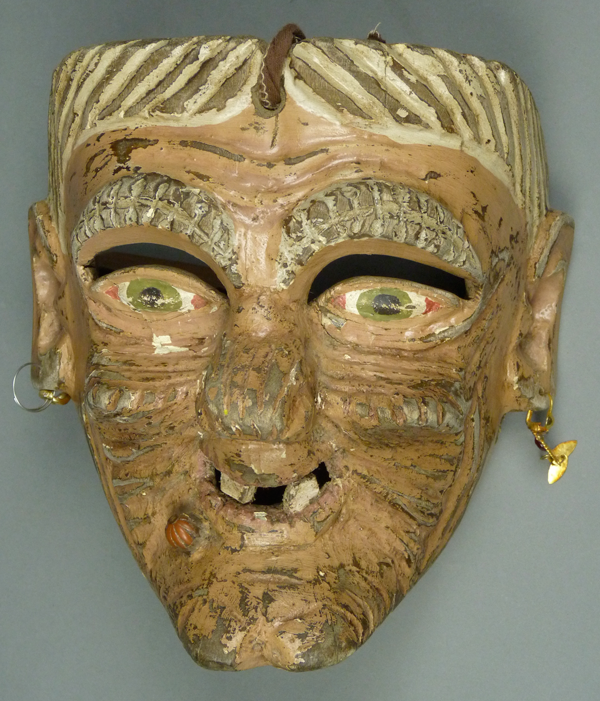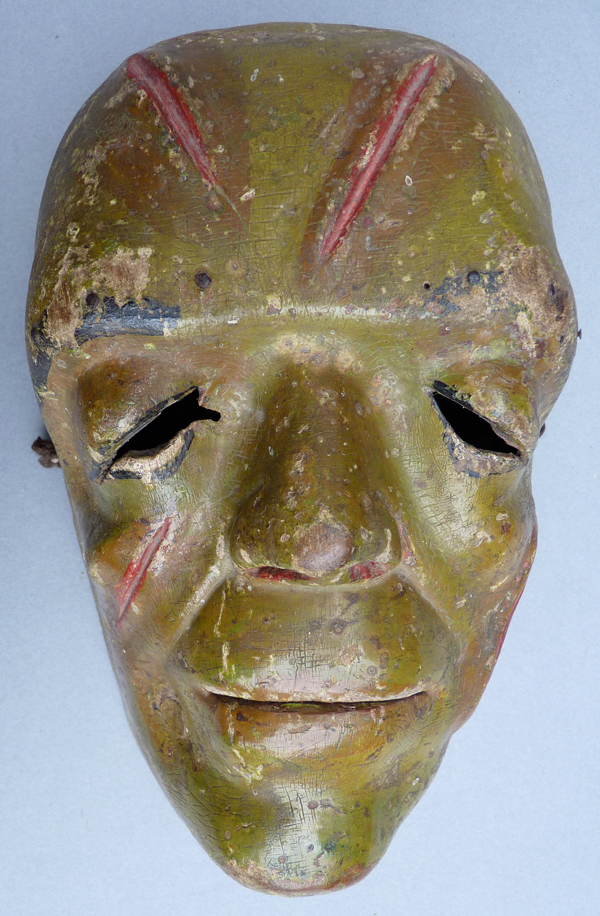This is the third post of an ongoing series about La Danza de los Santiagueros. In the first post I discussed Santiago and his son, Callintsin. Last week I wrote about the Santiaguero dancers, their masks, and other costume elements. Today I will describe the masks and related equipment of the Pilato dancers and that of their leader, Pilato el Presidente, using the work of one carver. Next week I will look at masks of Santigueros and Pilatos by another carver.
To very briefly review and then elaborate on some points that I have made in the last two posts, this is a dance that writers tend to describe as an alternate form of the dance of the Moros y Cristianos, a dance that is about events from the past. However this dance is not about historic events, instead it portrays a patched together and largely invented history that is meant to camouflage its apparent hidden purpose, which in my view is to complain to God about the exploitation and injustice that the Indians of Mexico have experienced at the hands of the Spanish and to ask God for relief. It is the Pilatos and their leader who are demonized in this dance, but the dancers used such labels to disguise their intention to criticize the Spanish.
Here is a mask of Pilato El Presidente, the leader of the Pilatos, that was carved by Manuel Antonio Castañeda of San Antonio Rayón, Puebla. In my book I speculated that this mask represented the Pilato character in the Negritos dance, but now I realize that I have seen about ten masks carved by Manuel to be worn by Pilato dancers in the Danza de los Santiagueros, along with one Santiaguero mask, and this scowling mask; apparently Manuel only carved masks for the Santiagueros dance. This Pilato is depicted as an extremely menacing figure. He can be presented as either menacing or with a serene smile.
This carver has such a dramatic style. This face seems inflated and yet sagging.

